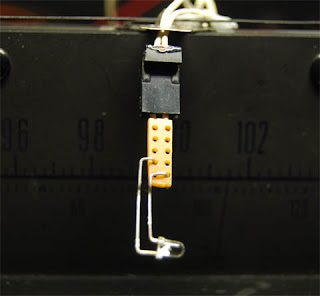 It is Ramadhan 1430 and Masjid Al-Bukhary is the place to be for Iftar in Kuala Lumpur. Not just because of the best Lambok porridge in town but for the well organized Iftar and the hard working volunteers. Yes my post about Al-Bukhary this year is about the dedicated people behind it especially those who are responsible for the fine food.
It is Ramadhan 1430 and Masjid Al-Bukhary is the place to be for Iftar in Kuala Lumpur. Not just because of the best Lambok porridge in town but for the well organized Iftar and the hard working volunteers. Yes my post about Al-Bukhary this year is about the dedicated people behind it especially those who are responsible for the fine food. When talking about food I definitely have to sneak into the kitchen except that it is not like the normal indoor kitchen. It is a tent erected behind the masjid. This is a large area for preparing the food for the large crowd. All made possible by the generous contribution from a prominent philanthropist as mentioned by brother Yusuf, the head cook. As I heard they received the biggest budget for Iftar in town. There is no need to mention name but jazakallah khair.
When talking about food I definitely have to sneak into the kitchen except that it is not like the normal indoor kitchen. It is a tent erected behind the masjid. This is a large area for preparing the food for the large crowd. All made possible by the generous contribution from a prominent philanthropist as mentioned by brother Yusuf, the head cook. As I heard they received the biggest budget for Iftar in town. There is no need to mention name but jazakallah khair.  Here is brother Yusuf giving some instructions to his assistant brother Ismail. These are the two guys that are responsible for the best Lambok porridge in Kuala Lumpur (Sorry Kampung Baru). They have to prepare three big pots everyday. I was also able to snoop around for the secret recipe. I guessed it right. Besides the porridge they have to prepare other dishes later that involves five cooks.
Here is brother Yusuf giving some instructions to his assistant brother Ismail. These are the two guys that are responsible for the best Lambok porridge in Kuala Lumpur (Sorry Kampung Baru). They have to prepare three big pots everyday. I was also able to snoop around for the secret recipe. I guessed it right. Besides the porridge they have to prepare other dishes later that involves five cooks.  Here is Ismail and Yusuf paddling their way to a culinary delight of Lambok porridge. Oh those spices and herbs working their magic on me. A year in waiting and I am finally here witnessing a miracle happening before my eyes. Steadfast patient I say and it was just noon on a Ramadhan day.
Here is Ismail and Yusuf paddling their way to a culinary delight of Lambok porridge. Oh those spices and herbs working their magic on me. A year in waiting and I am finally here witnessing a miracle happening before my eyes. Steadfast patient I say and it was just noon on a Ramadhan day. Here is the porridge laid out on the mat served in a foamed polystyrene bowl at the dinning hall. Though it is not served in fine china like in fancy restaurants but it is delicious and free. I am most humbled by His Grace. Complimented with some starters of curry puff, papaya and dates. That changes everyday and all were surprisingly delightful. But we will always have the wholesome dates and porridge.
Here is the porridge laid out on the mat served in a foamed polystyrene bowl at the dinning hall. Though it is not served in fine china like in fancy restaurants but it is delicious and free. I am most humbled by His Grace. Complimented with some starters of curry puff, papaya and dates. That changes everyday and all were surprisingly delightful. But we will always have the wholesome dates and porridge. Here are some other hard working volunteers serving food for the second session of Iftar after Maghrib prayers. All working like a clockwork. There was actually a long queue on the left. All anxiously waiting for the tasty delight after a long day fasting. The size of the crowd seems to doubled compared to last year. Could this because of my post I did last year? I wonder.
Here are some other hard working volunteers serving food for the second session of Iftar after Maghrib prayers. All working like a clockwork. There was actually a long queue on the left. All anxiously waiting for the tasty delight after a long day fasting. The size of the crowd seems to doubled compared to last year. Could this because of my post I did last year? I wonder. Though food seems to be the focus of Ramadhan that is between refrain and indulgence, but it brought people together from all walks of life. From people who are ever willing to serve and the people who are waiting to be served. It is a synergy beyond any other religious practices or celebrations not just for a day or two but for a full month. It is when friends meet friends and strangers meet strangers that may bloom into friendship in a peaceful and mutual environment. A glimpse of paradise perhaps.






